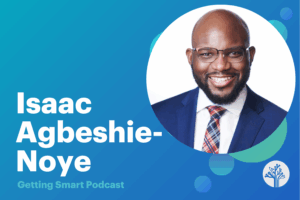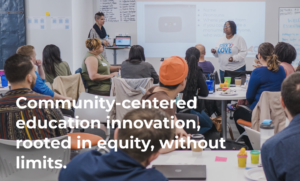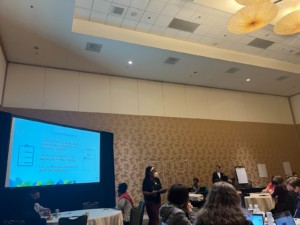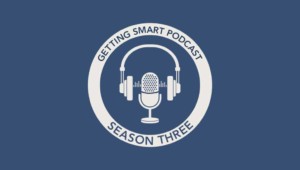On Balancing Improvement & Innovation

The last two decades of standards-based reform were a series of improvement efforts with a focus on good teaching in every classroom. It included higher expectations, with aligned curriculum, assessments and professional development. It left intact basic structures of age cohorts, the agrarian calendar and time-based courses and credits. While well executed, this agenda led to incremental improvements and narrowed gaps.
Innovations including personalized and competency-based learning means doing things differently hoping for step function improvement in traditional as well as broader aims. But it’s hard, often risky work that may require investment in capacity and tools. It may even require starting over and opening new schools.
10 Tips for EdLeaders
In the following recorded presentation and listed below are 10 tips for EdLeaders on balancing improvement and innovation.
- John Rice leads blended learning for D.C. Public Schools and makes the case for a different and better future. His work is supported by teacher development and school grants from Citybridge, a regional NGLC fund.
- Liz Whisnant, a principal in D.C. Public Schools, does a great job hosting conversations that yield a shared vision.
2. Leaders made system choices: enterprise or portfolio
- There are two approaches to making everything together for teachers and students–the one best approach (enterprise) where everybody uses the same curriculum, strategies, tools and systems or every school figures it out approach (portfolio).

3. Leaders balance improvement & innovation
- Improvement is better, innovation is different; improvement is fidelity, innovation is disruption; improvement is Doug Lemov, innovation is Clay Christensen. EdLeaders need to know the difference and find the right balance for their community.
- Factors that could influence the balance include capacity, teacher leaders, student challenges, community partners and the budget.
- Both improvement and innovation take a sustained support from effective leaders–so stick around!
4. Leaders facilitate agreements
- Good schools have healthy agreements.
- Improvement takes internal agreements on role and goals, shared strategies.
- Innovation requires broader external agreements because it often takes investment, involves tradeoffs and risk and may require new methods of reporting progress.
5. Leaders create incentives for innovation
- Mesa superintendent Mike Cowan created mini-grants for teacher teams and informed the process by hosting an EdTech conference.
- Denver Public Schools operates an incubator that provides mini-grants and technical assistance to teacher teams developing a pilot or designing a school.
6. Leaders make change doable:
- Gunnar Counselman (@FidelisEd) says students need purpose, path and people to help them succeed in secondary and postsecondary education and offers tips on organizational redesign to support improved learner experience (#LX)
- EdLeaders like Alex Magaña at Grant Beacon Middle School facilitate plans that link and sequence change in manageable chunks–phases and projects–with a clear purpose, defined scope, shared metrics and adequate resources. Magaña phased in blended learning, extended learning and character development over a three year people with lots of capacity building around each new step.
7. Leaders identify & leverage teacher leaders
- Fulton County (metro Atlanta) initiated systemic change by identifying and supporting 400 Vanguard Teachers.
8. Leaders open a fast lane
- Kettle Moraine (metro Milwaukee) allowed teacher leaders to launch themed and blended micro-schools inside existing schools.
9. Sustained (not heroic) leadership produces results
- It was Tom Payzant’s ten-year push in Boston that convinced me of the importance of sustained thoughtful leadership.
10. Leaders start with an innovation mindset
- Our three-year Smart Cities investigation identified an innovation mindset as a critical attribute of innovative EdLeaders.
- Leaders develop an innovation mindset by picking a learning goal each year, reading for breadth, visiting schools to learn, blogging to learn and share, and being a vulnerable learner.
 For more, see:
For more, see:
- 6 Practices of Thoughtful Leaders
- 10 Next Steps for EdLeaders: The Advanced Course
- 7 Things EdLeaders Should Do
Stay in-the-know with all things EdTech and innovations in learning by signing up to receive the weekly Smart Update.








0 Comments
Leave a Comment
Your email address will not be published. All fields are required.